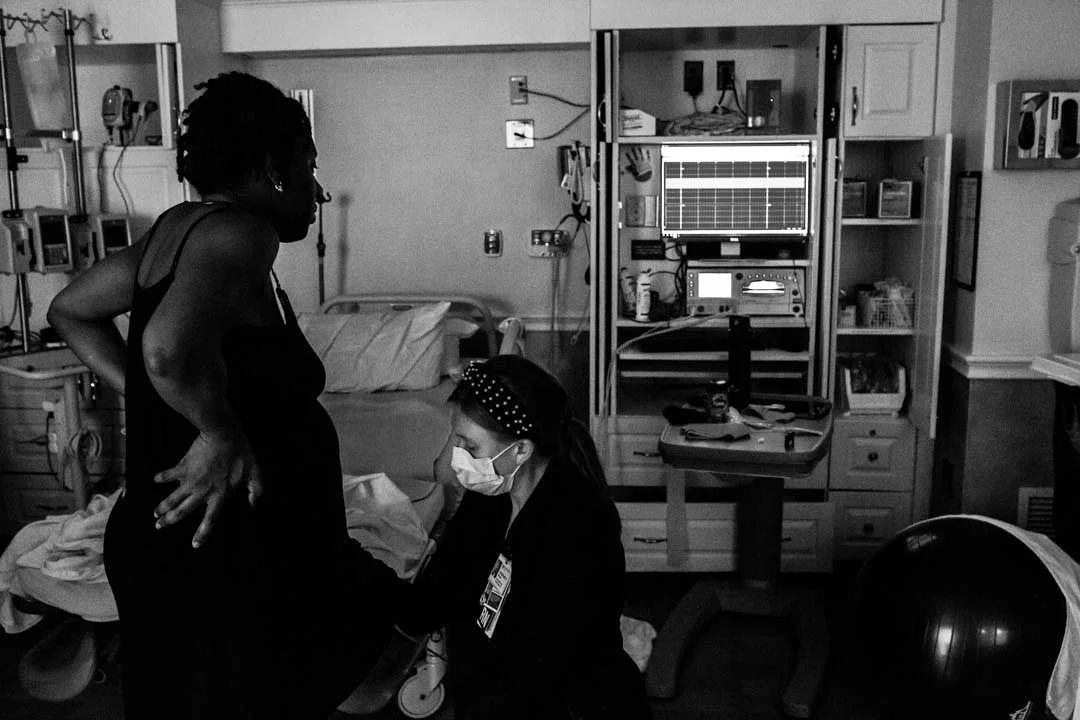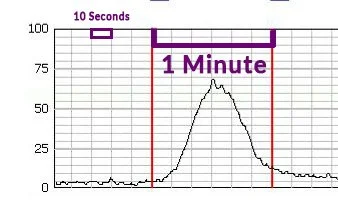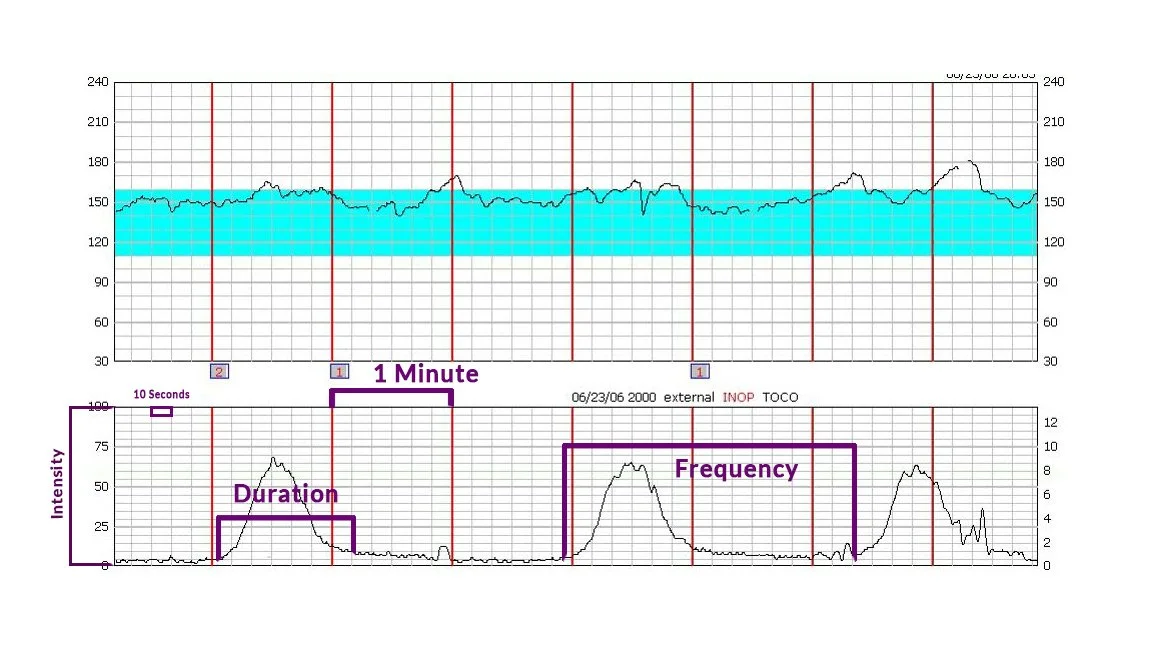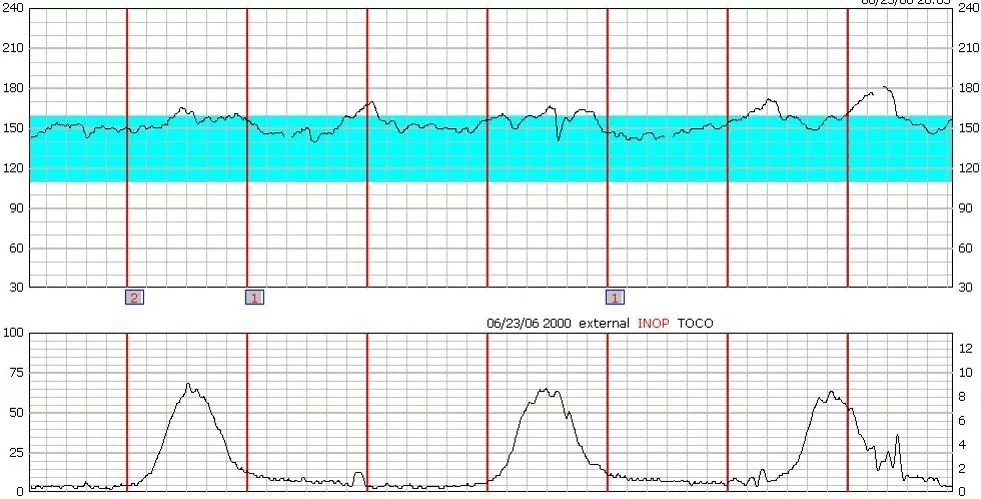How to Read a Hospital Contraction Monitor for Labor and Delivery
Reading the contraction monitor is far more simple than it seems! It's the best tool for timing your contractions and knowing when the right time to call your birth photographer (me!) to head to your birth.
Below is an image of what you will see on your monitor screen. (If it goes black at any time, ask your nurse to turn it on for you to see.)
Understanding the Monitor
Ignore the top graph - that is your baby's heart rate.
The horizontal axis measures Time:
Each small, individual little block represents 10 seconds.
Each bold line represents One Minute.
The vertical axis measures the Intensity of contractions.
There are three key measurements
Duration, Frequency, and Intensity
Duration How Long a Contraction Lasts
This tells you the length of each contraction, or how long your contraction lasts.
To measure the duration, count the small blocks from the beginning to the end of a contraction. For example, if a contraction spans 7 small blocks, it lasted 70 seconds.
In early labor, contractions are shorter.
As you progress, contractions increase in duration.
Frequency Timing Contractions
Frequency measures the time from the start of one contraction to the start of the next.
This is the most important measurement for knowing when to call!
Our sample graph shows two one-minute blocks and two 10-second blocks between the start of the first contraction and the start of the next.
We calculate frequency by averaging over 10-minute increments.
Our graph below only shows 8 minutes, but we will use it for an example.
The first contraction is 3 minutes apart from the second
The second is 2 minutes and 20 seconds apart from the third
Without precise math, we can estimate contractions are occurring every 2.5 to 3 minutes.
In early labor, contractions are spaced further apart. As you progress, they become closer together.
***Don’t feel you need to constantly watch the monitor. Just every hour, or whenever things feel different, take a 10 minute reading and find the average.
Intensity How Strong Contractions Are
Intensity is measured on the vertical axis.
While not as important for calling me, higher peaks indicate greater cervical change (aka dialation).
If your contractions are peaking regularly near 75, labor is progressing.
If you haven't called yet and contractions are consistently reaching high intensity, it's probably time to do so
If you're on Pitocin, expect higher intensity as the dosage increases
Best time to call your birth photographer
Active Labor
When contractions are 5 minutes apart or rapidly increasing or you are already dialated to 5 cm or more.
If you have fast deliveries, it would be a good idea to call closer to 6-minute intervals
Final Notes
Not all births are textbook. I have had some where contractions start and then stop for hours, and the all of a sudden, contractions spike and baby is here in 15 minutes. When in doubt, call.
If you have an epidural, it’s really important to watch this monitor. It is very easy to take a nap and wake up ready to push.
If you have any questions, ask your nurse! Most are happy to explain it to you!
Happy birthing! ✨




